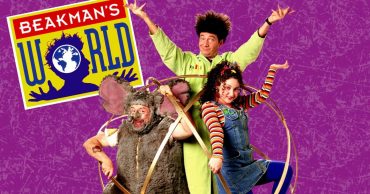
There is a Skillshare video ad that outlines a relatively unknown “30 mile zone” that surrounds the Hollywood, California area which, according to the video, makes Hollywood the preferred location for shooting movies. The thumbnail of this video is that salaries and compensation crew members receive from the production company are significantly lower within this 30 mile zone. The underlying reason for this is the large number of union contracts that are involved with all the various skill groups required to make a movie: actors, writers, directors, producers, etc. Each group has their own union, with the potential of costing a company significant dollars if a movie is produced outside of the zone.
Many of the movies made in Hollywood use sets created within this 30 mile radius and keep Hollywood at the center of the American movie industry. But this also may explain the increasing use of technology and computer graphics in movies.
Back in the day when sets were built for movies like Gone with the Wind, a studio lot would be assigned to the picture, usually located within that 30 miles radius. It was cheaper for the production company because toting all the equipment and paying all the people (remember when extras were a key feature in movies, like the Munchkins in The Wizard of Oz?) to Kansas would mean less profit. It simply made financial sense.
But today you can create two huge armies battling one another for the price of a couple of computer animation programmers. With actors being introduced to the world of virtual reality in Avatar (there is an Avatar 2 in the works) the need to go anywhere in the world virtually disappears, and new worlds can be created without leaving a Hollywood studio. It also eliminates many of the supporting jobs: lighting, production buyer, costume makers, etc. and will further reduce production costs.
I don’t know about you, but I can tell whether a character is a digital creation or not. Parts of Gladiator are clearly digitized, and how long ago was that movie made? Sometimes I wonder if many of the historical pieces take placed in darkened rooms and locales because they have come to realize high quality computer graphics still has a way to go. World War Z was worth watching from a CGI perspective but things need to get better. Maybe divorcing reality using animated movies is why they have become some of Hollywood’s biggest hits.
While this 30 mile zone qualifies as a nice-to-know, its existence may actually have benefitted the public all these years. Keeping production costs low allows us the see the best actors and actresses, and keeps people employed. Unfortunately, in these days of technology taking over the world it is better to have a decent paying job than no job at all, something the 30 mile zone continues to help with.
The 30 mile zone may actually be looked at as a buffer zone, a safe space, for everyone involved in the film production business. There has been an expected loss of jobs and opportunities for this group of people, but living within this 30 mile radius offers a reasonable level of financial stability. YouTube actors and producers are finding out that despite the miniaturization and affordability of technology, there is nothing like a Hollywood produced movie.
One final note. Attempting to change or do away with the 30 mile zone would involve the rewriting and renegotiation of hundreds of contracts with unions. But there is no advantage to the movie makers to do this, and other than writers, who strike from time to time, most film industry employees are content to live with the existing rules.
 Follow Us
Follow Us





